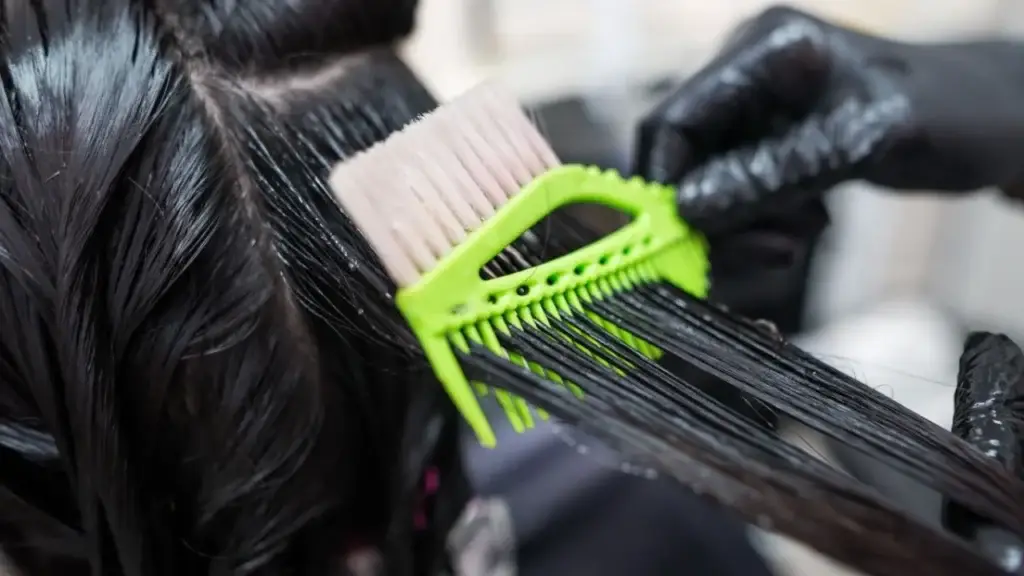Three U.S. lawmakers are pressing the Food and Drug Administration (FDA) to take immediate action to ban hair-straightening products containing or emitting formaldehyde, a known carcinogen. Representatives Ayanna Pressley (D-Mass.), Shontel Brown (D-Ohio), and Nydia Velázquez (D-N.Y.) expressed concern over the FDA’s long delay in addressing the health hazards linked to formaldehyde in these treatments, urging the agency to act on mounting evidence of its dangers.
In August 2023, the three representatives sent a letter to FDA Commissioner Robert Califf questioning the agency’s years of inaction. They emphasized the serious risks formaldehyde-based hair straighteners pose to both consumers and salon workers, who are exposed to the harmful chemical during each use. Despite being aware of these dangers for over a decade, the FDA has yet to impose a ban.
The push to ban formaldehyde in hair-straightening treatments gained momentum in 2021 when the Environmental Working Group (EWG) petitioned the FDA to eliminate the use of this chemical in hair-straightening products. Highlighting extensive research on formaldehyde’s health risks, EWG urged the agency to swiftly remove the substance from use. However, as of 2024, the FDA has neither responded to the petition nor enacted any significant regulatory measures.
Formaldehyde’s Role in Hair-Straightening Treatments
Formaldehyde is commonly used in hair-smoothing and straightening treatments, particularly in products like the “Brazilian blowout,” because it helps keratin proteins in hair bond together, allowing the hair to stay straight. However, exposure to formaldehyde is linked to numerous health risks. Short-term exposure can cause irritation of the throat, nose, and eyes, as well as difficulty breathing. Repeated exposure can lead to allergic reactions, asthma, and other respiratory issues.
Formaldehyde has long been classified as a known carcinogen by the National Toxicology Program, and it has been associated with fertility issues and miscarriage. Additional health problems reported by users of formaldehyde-based hair treatments include hair loss, loss of taste and smell, and scalp irritation.
In response to a 2011 request from the EWG, the FDA released nearly 400 pages of complaints from consumers who had suffered adverse reactions to formaldehyde-containing hair treatments. Since these reports were voluntary until new legislation was passed in 2022, the number of actual cases is likely much higher.
FDA’s History of Inaction
Despite the overwhelming evidence of the dangers, the FDA has yet to take decisive action. The FDA has been aware of the risks associated with formaldehyde-based treatments since at least 2008. However, the agency has been slow to respond to petitions and has repeatedly failed to implement stronger safety measures. In 2017, the FDA agreed to review a possible ban on formaldehyde in hair straighteners but denied a request to require manufacturers to label products containing the chemical.
Meanwhile, California took its own legislative action in 2020, passing the Toxic-Free Cosmetics Act, which bans formaldehyde and other harmful chemicals in personal care products. This law goes into effect in 2025, setting a precedent for stricter regulations in the absence of FDA intervention.
Protecting Yourself
Until the FDA acts, consumers can take several precautions to protect themselves from formaldehyde in hair-straightening treatments:
- Ask about ingredients: Before receiving any hair-straightening treatment, ask your stylist if the products used contain formaldehyde and opt for alternatives when available.
- Report adverse reactions: If you experience any harmful effects from a hair treatment, report the incident to the FDA to help build the case for stronger regulation.
- Support legislative efforts: Reach out to your local and state representatives to advocate for laws banning harmful chemicals in personal care products.
The push for FDA action is part of a broader effort to increase safety standards for hair treatments and reduce exposure to hazardous chemicals in personal care products. As the evidence continues to grow, lawmakers and advocacy groups remain committed to ensuring that the public is better protected from the health risks associated with formaldehyde.







